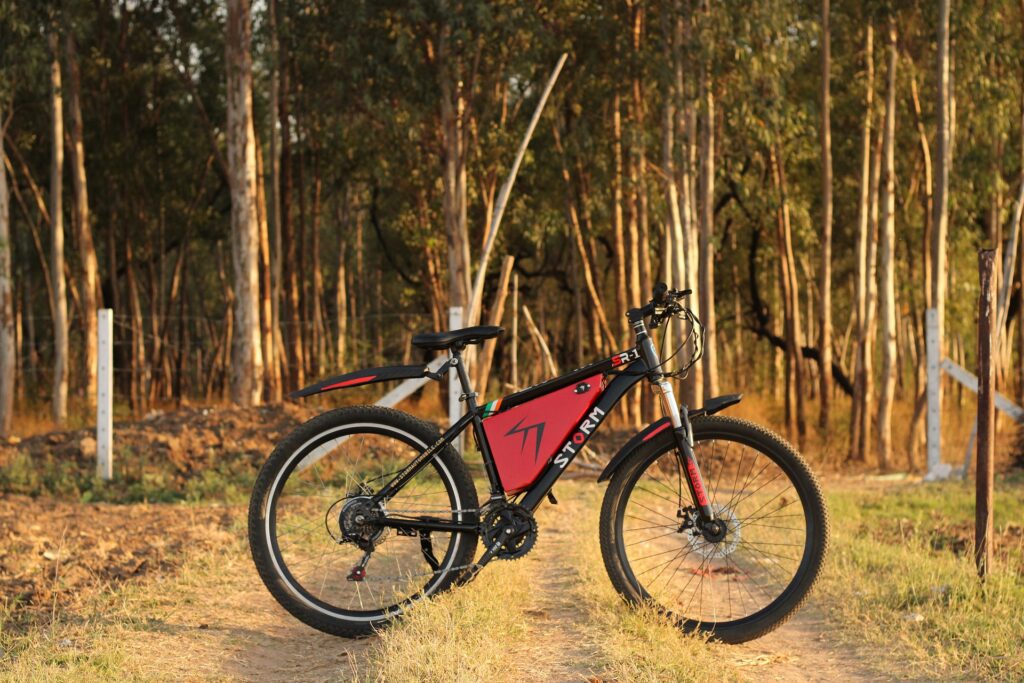Electric bikes, or e-bikes as they’re more commonly known are usually powered by a lithium-ion battery. A larger version of the one most likely in your smartphone.
Like most batteries, and indeed like phone batteries, lithium-ion batteries degrade over time, meaning the charge level in your ebike will disintegrate as the battery operating system ages. The bike will still provide an assist to your pedal power, but it won’t last as long. However, battery degradation is always a little different and there are steps you can take to ensure your battery lasts a long time.
If you’re looking at overall electric bike longevity, check out our article on how long electric bikes last.
How Long Does A Battery Last On An Electric Bike
Lithium-Ion batteries work by passing the positively charged anode to a cathode. Each and every time you recharge your battery, it will lose a little bit of capacity. You’ve probably noticed that with your smartphone or laptop. It’s the same for any lithium-ion battery out there, even electric cars.
Unfortunately, because of the makeup of the battery, it can even lose charge over time when the battery isn’t being used at all. It’s just the nature of lithium-ion.
Usually, battery life is measured in charge cycles, being how many full charges you can get out of the battery before it degrades too much to use comfortably. On average, you will see that your battery will become less efficient between the three and five-year mark. But there are further variables in play, such as what type of battery you use, and indeed how well you care for your electric bike battery.
In terms of how long a battery will last once charged up, you can expect between 30 and 70 miles of riding. It’s quite a broad amount, but it depends on how much you use the battery, and how you maintain it during the cycle.

Battery Lifespan Explained
There are a few different batteries being used in bikes, it all depends on the manufacturer and you can find out which they use by simply asking or checking out the technical details. The main ones, and their general lifespans are:
- Lithium Batteries: These are the mainstay in electric bikes at the moment and tend to hold up to or just over 1000 charge cycles. Some of the newer bikes even sport Lithium Iron Phosphate batteries which are more efficient, whereby you can expect around 1300 depending on the battery.
- Nickel Batterlies: You can expect around 500 charge cycles here. Nickel aren’t favoured as much as lithium ion, and are usually attached to the cheaper or entry level electric bikes
- Lead Batteries: You don’t see these much as all anymore, as they were mainly used in the first generation of electric bikes. You can expect around 300 charge cycles.
Of course, this is just a guide. Each battery might be slightly different over lifetime use. However, most sellers will guarantee the battery life for up to and sometimes over two years. The law, depending on where you are, will usually mandate this, so make sure you check it before you buy a bike. Also, logically, if your electric bike weighs more it’ll cost more power to push through the air.
Keep an eye on it, because if you notice it losing charge over the first year it’s probably defective and you’ll be within your rights to request a replacement.
What If The Battery Hits Its Charge Cycle Limit
It happens. If it does this you can usually expect a slight degradation which will get worse over time. Each battery can be different, so it’s up to you to see whether you notice a substantial dip in battery quality. When you do, you can take the decision to replace the battery or carry on using it a short while longer.
If you don’t use the bike often, you might find that you can go a little longer. Or, you might only use the electric bike for a short commute, meaning the reduction in battery power isn’t noticed too much. If you’re riding the bike for huge swathes of the day you’re more likely to notice the battery losing power.
An Ebike Battery Will Wear Out Even If You Don’t Use It
You might be thinking that if you don’t use the bike as much, it’ll preserve battery life. However, batteries, especially lithium ion batteries, degrade over time whether you use them or not. It’s because they are always discharging a certain amount of power, whether they’re in direct use or not.
Remember, you can charge your electric bike without a battery if the occasion calls for it.
Can Good Care Make Electric Bike Batteries Last Longer
Yes, if you care for your bike and battery well enough there’s a good chance they’ll last longer or at least won’t degrade faster than they’re meant to. These tips can give you a headstart.
Ebike Charging
- Never drain the battery to absolute zero and ensure that when you do charge it, charge it to 100%
- Charge the battery now and then even when you’re not using the bike. This is applicable to those who don’t ride in summer
- Use the charging cable and adapter which came with the battery, not third party products. If you don’t, you could short circuit the battery due to overcharging
- If you’ve just got in from a bike ride, don’t put it on charge right away. Let it cool down a little first
- Try to disconnect it once its fully charged up
Battery Cleaning
- If you’re giving your bike a good clean, remove the battery first. Most are waterproof, but its better to be safe than sorry
- Be careful if you’re using a steam cleaner because steam usually defeats waterproofing on a lot of bike batteries
- Don’t immerse the battery in water. This applies to cleaning the battery, but also if you’re mountain biking and decide to tackle a high body of water.
Batter Storage
- Make sure your battery isn’t in direct sunlight. Keep it stored in a cool, dry area with temperatures between 0 and 20°
- Don’t store it near a heat source, like a radiator or generator
Your electric bike battery will degrade over time and eventually, it’ll just run out of juice. However, the way you care for the battery goes a long way. Also, the quality of the bike and battery has dynamic importance, which is often dictated by electric bike cost. At the same time, make sure you check the battery out over the first few weeks of ownership to ensure it isn’t defective.

